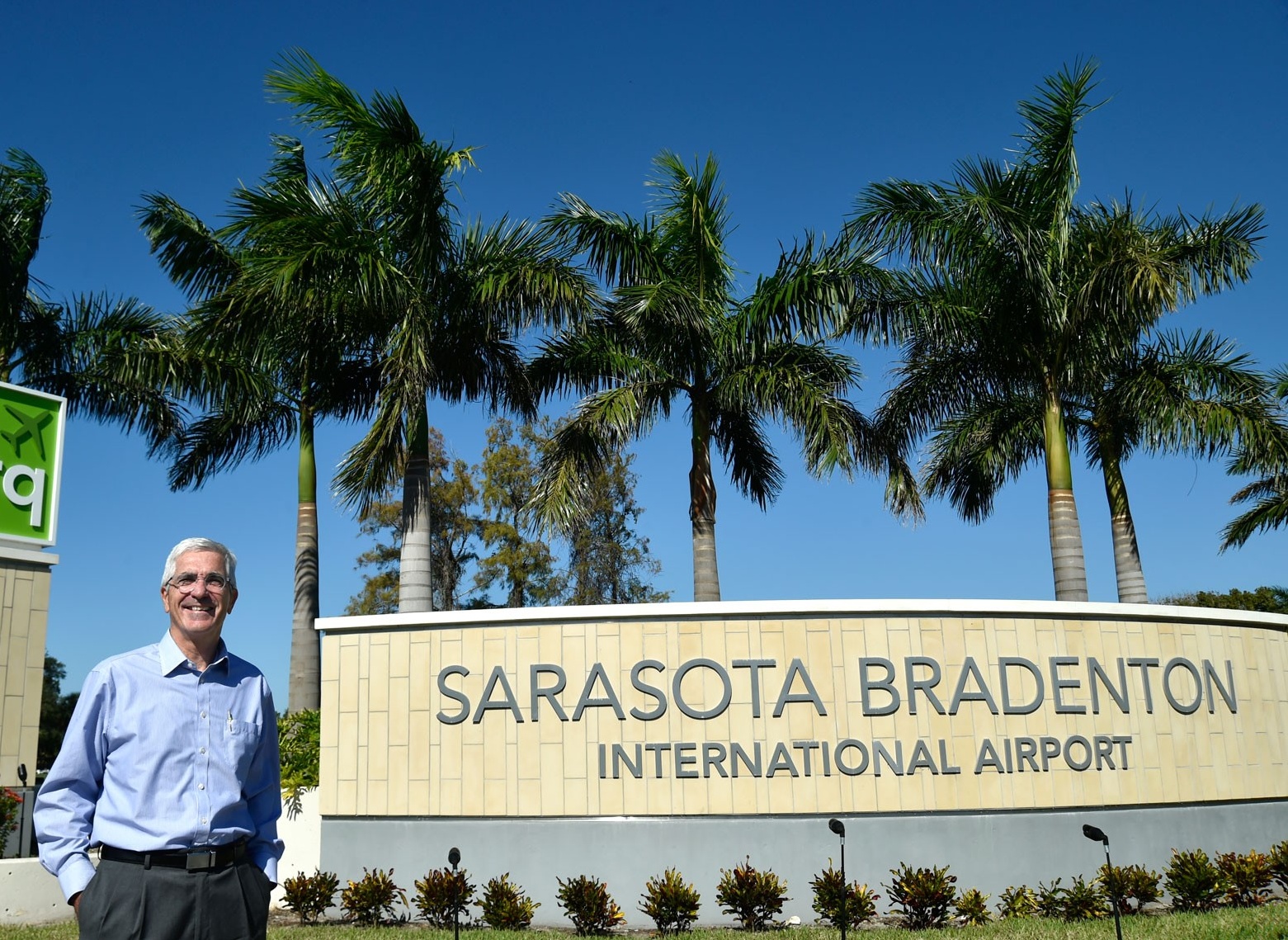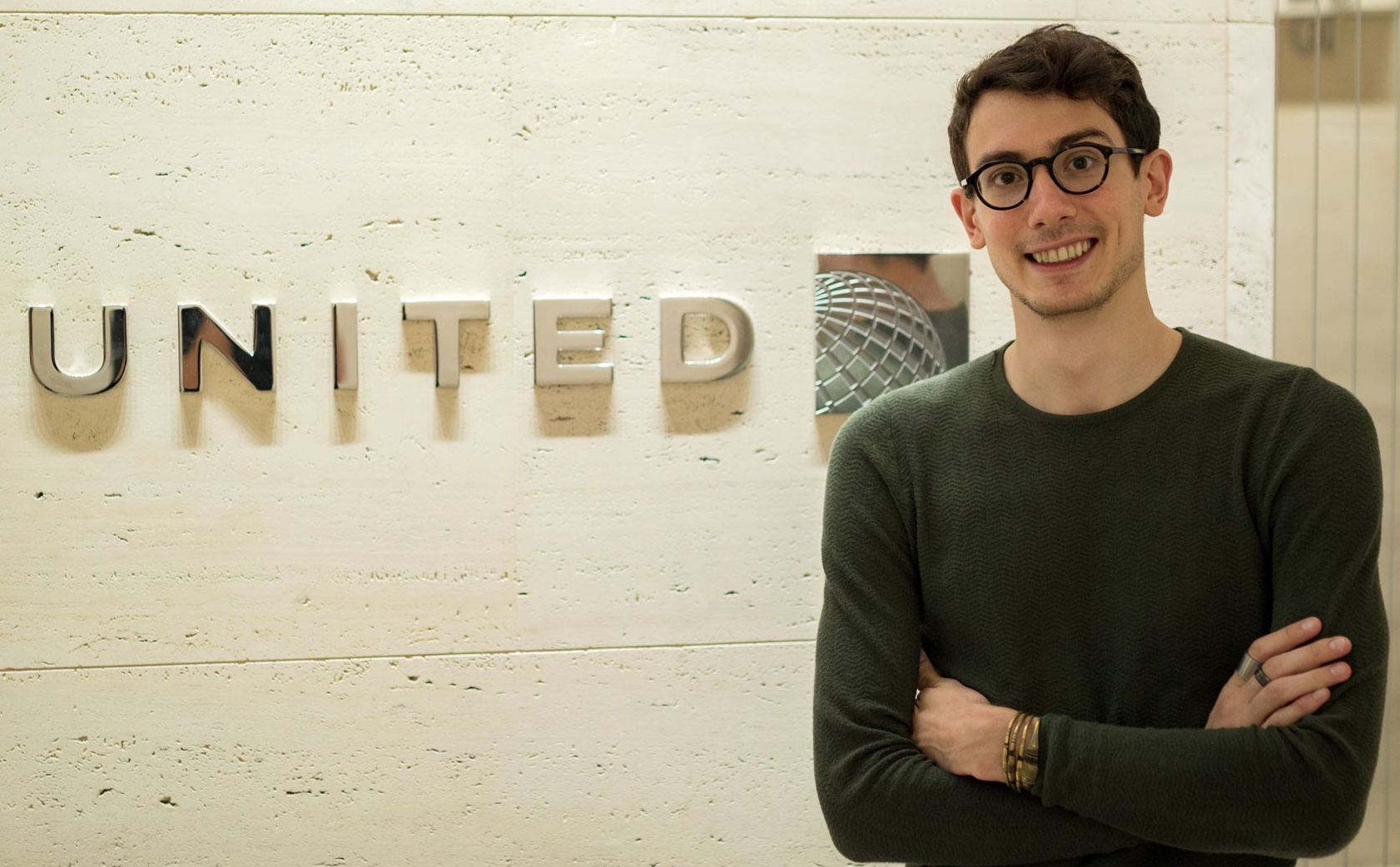Turbulent times
Alumni lead the airline industry through COVID-19
By Kevin Manne
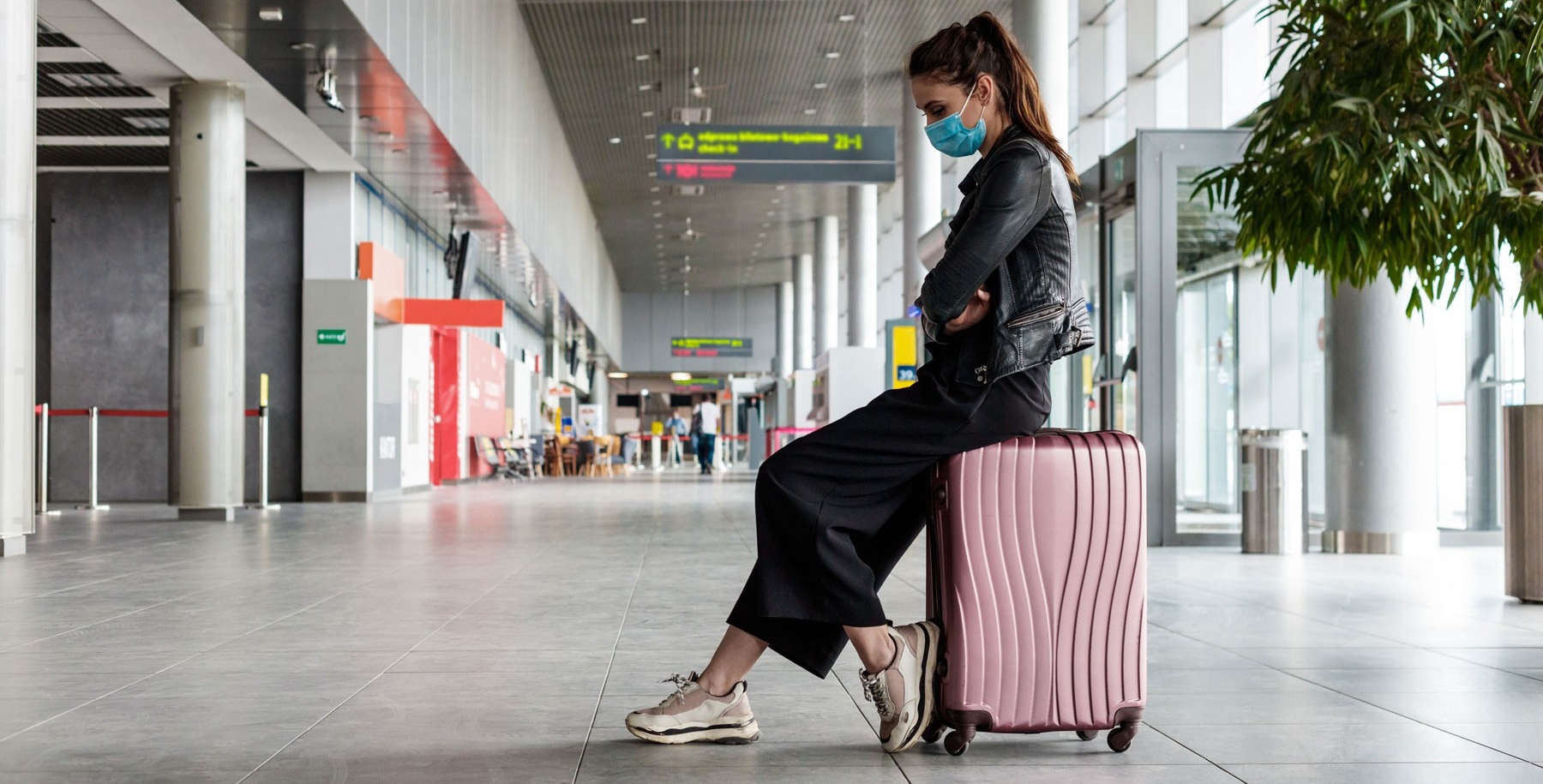
Located on the southwestern coast of Florida, the Sarasota Bradenton International Airport hosts nine airlines and serves nearly 2 million passengers each year.
Rick Piccolo, BS ’81, has been leading the charge as president and CEO of the small hub airport since 1995.
Most days find Piccolo managing things like financial reports, capital construction projects, regulatory issues and the people who make it all work. Occasionally there are days that break out of the norm, as in December 2019, when a truck crashed through a wall into the baggage claim area and caused $250,000 in damage.
Other times, “shock events” come along that change the landscape of the entire industry, such as SARS, 9/11 or the 2007-08 financial crisis. According to the Airline Passenger Experience Association, travel demand in the U.S. fell by more than 30% in the immediate aftermath of 9/11, with a loss of more than 62,000 jobs. The industry didn’t fully recover for nearly three years.
Piccolo says that even as 9/11 changed the airport’s entire operations overnight, the COVID-19 pandemic made an even bigger impact.
“We had a record year in 2019 and were the fastest growing airport in the U.S., with traffic up 53%,” he says. “We were expecting to hit the highest number of passengers in our history in March, but about halfway through the month our traffic dropped 95%. I’ve never seen anything like it.”
School of Management alumni like Piccolo have been at the forefront of efforts to lead the airline industry through the crisis wrought by the coronavirus, helping their companies and fellow employees weather the storm.
Air travel came to a crawl in 2020, but as safety measures improve and vaccine distribution ramps up, these alumni and School of Management faculty see a slow return to normal on the horizon—perhaps with some long-term alterations.
Into the unknown
In early 2020, Joanne Rinaldo, BS ’95, was a senior manager at United Airlines working in digital infrastructure, supporting technology at airports and the tech used by pilots and flight attendants. When COVID-19 hit, her job rapidly shifted from improving customer experience and the airline’s efficiency to getting large groups of employees set up to work remotely.
“We went from ‘what cool stuff do we want to do’ to ‘what do we need to do,’” says Rinaldo. “We changed focus to new projects, such as developing software to allow customers to complete touchless check-in at airport kiosks, and enabling call center staff to field calls from home as thousands of customers canceled their flights.”
Meanwhile, Anthony Falvo, BS ’17, MBA ’18, was working as senior analyst for international network and alliances at United.
He’s part of the team that decides the size of the plane needed for each route and how often it flies. Typically, he’s working on routes and schedules six months to two years in advance. After COVID, that timeline shrank to four to eight weeks.
“There has never been such a dramatic drop in demand over such an extended period of time, or one that has happened so quickly,” says Falvo. “Things fluctuate all the time, and different states and countries come up with new rules that travelers have to abide by, so we’re constantly shifting and making sure we’re compliant, while also having planes going where people want them to go.”
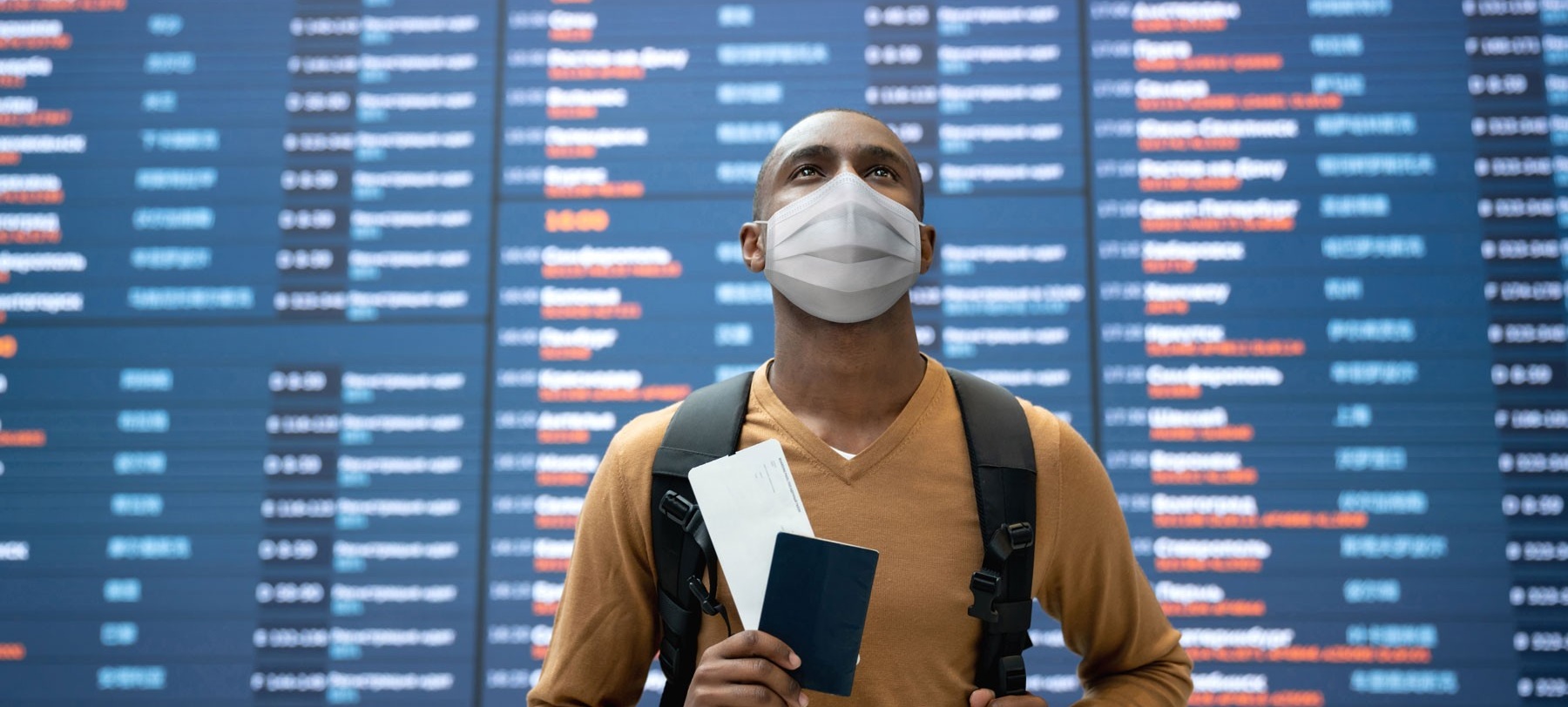
Busting, but booming

Tiu
Cristian Tiu, associate professor and chair of finance, says one reason airlines were able to sustain losses throughout 2020 was because the cost of fuel fell.
“Jet fuel is at about 30 to 40% lower than last year, so that has softened the blow of the increased costs incurred by having to disinfect planes more and impose new health measures.”
Another way airlines helped curb losses was to drastically reduce the number of flights.
But a reduction in passenger flights also meant reduced capacity for air cargo, as about half the world’s air freight demand is usually met by space in the bellies of passenger planes. Air cargo prices surged as capacity plunged.
In response, airlines like United, Delta and American began flying cargo-only flights. From February to November, Delta flew some 1,600 chartered cargo flights, while United flew nearly 7,500. According to a CNBC report, cargo sales haven’t been enough to make up for the $20 billion in losses that U.S. airlines suffered in the second and third quarters of 2020, but it has been an important revenue source with passengers forgoing flights.
Private charter flights are also booming, according to Natalie Simpson, associate professor and chair of operations management and strategy, who cites a number of reasons.
“The private charter industry has been growing aggressively since the late ’90s, when the internet first enabled convenient access to brokers who could book private aircraft for you, versus having to be wealthy enough to own one yourself,” she says. “There were people on the fence before COVID about the expense of flying chartered even though they could afford it, but now they’re going for it.”
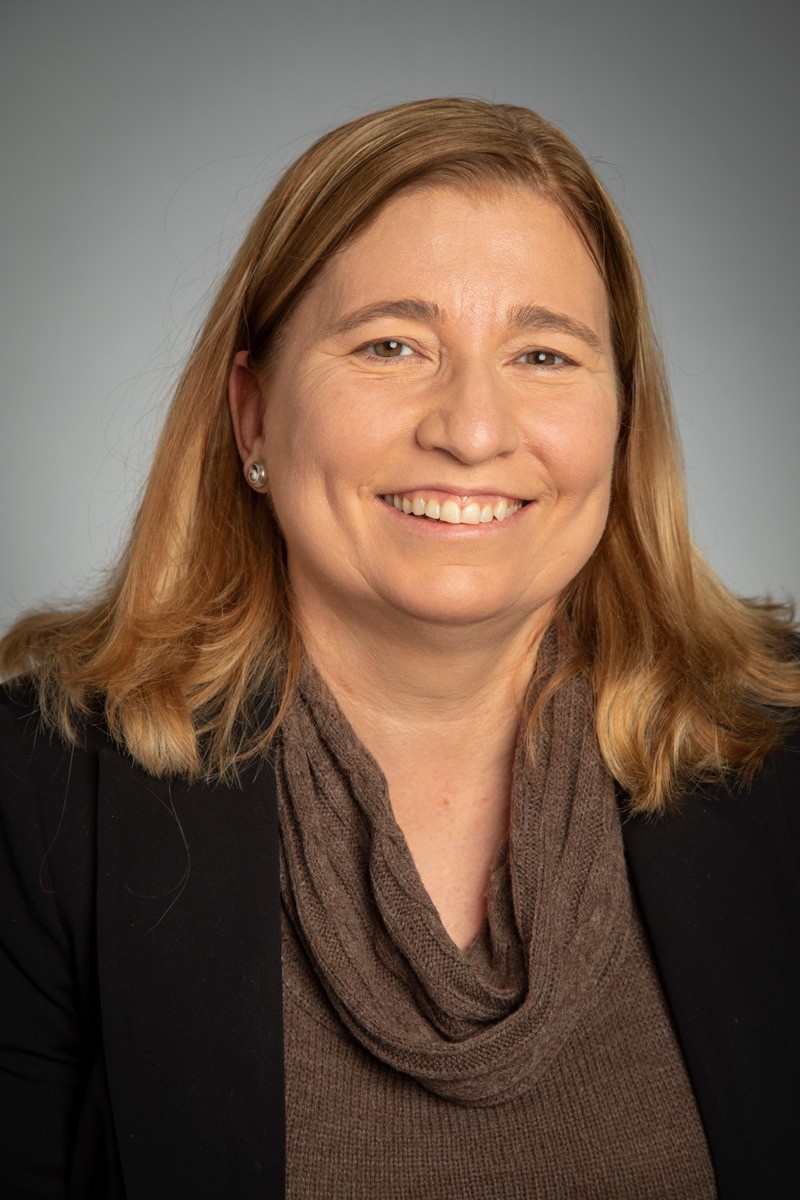
Simpson
Beyond the booms in cargo and private flights, Simpson says airlines are getting creative in other ways. Enter: Flights to nowhere.
In September, Australian airline Qantas booked its first sightseeing flight for passengers eager to take to the skies at a time when the country had grounded nearly all international flights.
The journey took place on a Boeing 787-9 Dreamliner aircraft usually reserved for intercontinental trips. It features the largest windows in a commercial aircraft, making the jet ideal for showcasing Australian sights during the seven-hour trip that performed a giant loop taking in Queensland and the Gold Coast, New South Wales and the country’s remote Outback.
Qantas restricted the flight to 134 passengers—less than half of the Dreamliner’s capacity—at prices ranging from around $500 for economy to nearly $3,000 for business class. The trip sold out within 10 minutes.
“It’s probably the fastest-selling flight in Qantas history,” the airline’s CEO, Alan Joyce, said in a statement. “People clearly miss travel and the experience of flying.”
Airlines also have been working to repatriate travelers who were stranded abroad during the pandemic. Since March of 2020, United operated about 1,300 repatriation flights to help bring more than 167,000 people back to the U.S., while Delta brought home more than 28,000 stranded travelers in March and April alone.
Relief takes flight
The Coronavirus Aid, Relief and Economic Security (CARES) Act pumped more than $50 billion in grants and loans into the airline industry since it was signed into law in March 2020.
At United, Joanne Rinaldo says their executives were among the first to recognize the oncoming hit to the airline industry and went to Washington to lobby for relief.
“The CARES Act helped airlines and other companies affected by the pandemic to pay for employee salaries and benefits during the economic downturn,” she says.
And while the relief package kept employees on the payroll during the pandemic, those benefits expired Sept. 30, leaving thousands unemployed.
“Those of us in technology or management can transition our skills more easily to other industries,” Rinaldo says. “Pilots and flight attendants have such specialized skills that they have limited options for where they can work. Their livelihoods are devastated.”
Allison Brooks, BS ’15, MS ’16, CPA, is manager of treasury and corporate finance at JetBlue. There, she manages day-to-day cash issues and longer-term strategic planning, so the company has the funds it needs to survive a crisis like COVID-19 and recover financially once the pandemic is over.
She says the additional aid provided to the airline industry by December’s COVID-19 relief bill has been a sigh of relief.
“We were optimistic a second CARES Act would be passed and are grateful an agreement was made heading into 2021,” she says. “With the vaccine rollout and the additional payroll support, we are hopeful these developments will help us begin to recover.”
Back to the old normal?
Brooks
Brooks has flown several times since the start of the pandemic and says it was a good experience, but understands why it can be stressful.
“I commend the industry for taking immediate measures to improve safety and customer confidence when flying,” she says. “I’m curious to see if in the long term we continue to do things like wear masks on planes. The positive vaccine news gives us hope for a better 2021, but we still have a long road to recovery.”
Cristian Tiu sees a long-term impact on business travel, as video conferencing technology has become ubiquitous throughout the pandemic.
“You can cut about 25% of the international flying and your business can continue as usual, with people meeting through Zoom instead,” he says. “If that happens, then obviously it will increase costs for airlines and decrease the frequency of international flights—and I don’t know exactly how the industry will cope.”
He does see a silver lining in all of this, however.
“The COVID crisis will make the airlines more customer friendly—cleaner, more comfortable seating and with more flights on time,” Tiu says.
At Sarasota Bradenton, Rick Piccolo agrees that it’ll be a slower recovery for business destinations, but leisure destinations like his are doing better because people want to visit places where they can get away and be outside.
“In Sarasota, you can visit the beaches, kayak, golf—a lot of things that are conducive to social distancing, so that’s great for us,” he says. “Airlines and airports have made tremendous efforts to ensure your flying experience is safe, and we hope more people will get back in the air soon.”
Tips for travelers
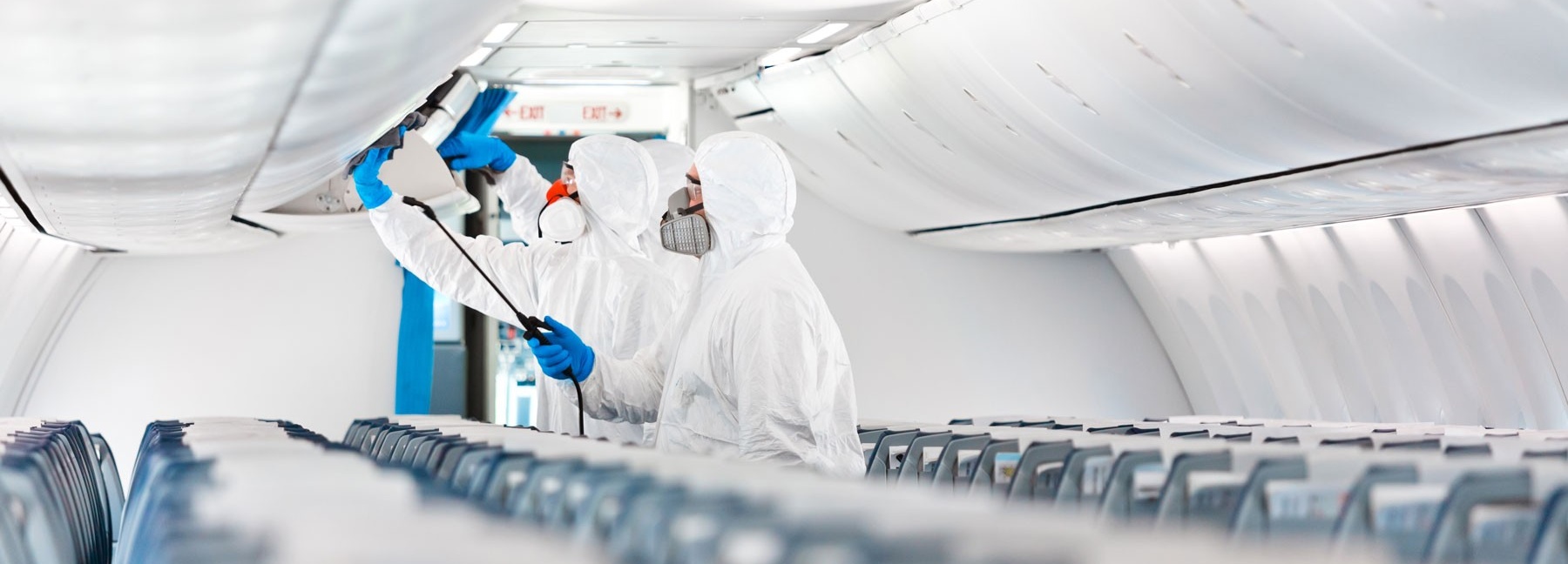
Getting around during the COVID-19 pandemic is a much different experience than what you’re probably used to. If you must fly, here’s some advice from our industry insiders to make your trip as safe and comfortable as possible:
- Keep the virus off the plane
You knew this one was coming, right? It was tip No. 1 from all of our industry experts. You play a vital part in preventing the virus from getting on the plane to begin with. Physical distancing, washing your hands and wearing a mask are key to everyone’s well-being. And if you’re sick, stay home. Plus, every airline requires all passengers to wear a mask and if you refuse, you’ll be asked to leave. - Take comfort
Once you’re on the plane, the built-in filtration systems keep the air moving and clean. Rick Piccolo, BS ’81, president and CEO of the Sarasota Bradenton International Airport, says that on commercial aircraft, the air flows downward through the cabin and is routed through HEPA filters and mixed with fresh, outside air before returning back to the cabin. The system replaces the entire volume of cabin air every 2-3 minutes with half filtered air and half outside air. - Stretch out
With demand way down, open space is way up. Allison Brooks, BS ’15, MS ’16, CPA, manager of treasury and corporate finance at JetBlue, says that on her first trip after the pandemic began, it felt like she was on a private plane with only about 10 people on the flight altogether. So take advantage and enjoy the extra room. - Bring the necessities
Anthony Falvo, BS ’17, MBA ’18, senior analyst for international network and alliances at United, has traveled a few times since COVID hit. He says to come prepared: pack some of your own snacks, and sanitizing wipes to clean off your seat. Some airlines have begun handing out snacks again, but there’s nothing quite as comforting as having some of your own.
